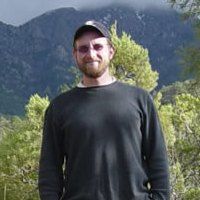Pelletier & Rasmussen, 2009
Quantifying the climatic and tectonic controls on hillslope steepness and erosion rates.
Pelletier J.D. and Rasmussen C. (2009)
Lithosphere 1(2): 73-80
-
Catalina-Jemez, INVESTIGATOR
-
Catalina-Jemez, INVESTIGATOR
Abstract
Hillslopes in humid regions are typically convex to concave in profile and have a relatively thick, continuous regolith cover. Conversely, hillslopes in arid regions are typically cliff-dominated and have a relatively thin, discontinuous regolith cover. The difference between these two end-member slope forms is classically attributed to climate, but climate, tectonics, and lithology all play a role. In this paper, we describe a mathematical model for hillslope gradient and regolith thickness using basic climatic and tectonic input data for a given rock type. The model first solves for the regolith thickness on a planar slope segment in topographic steady state using the soil production function and a prescribed uplift/incision rate. The climatic and lithologic controls on soil production rates are quantified using an empirical energy-based model for the physical weathering of bedrock. The slope gradient is then computed by balancing uplift/incision rates with sediment fluxes calculated using a nonlinear depth- and slope-dependent sediment transport model. The model quantifies the ways in which, as aridity and uplift/incision rates increase, regolith thicknesses decrease and hillslope gradients increase nonlinearly until a threshold condition is reached, beyond which bare, cliff-dominated slopes form. The model can also be used to estimate long-term erosion rates and soil residence times using basic input data for climate and regolith thickness. Model predictions for erosion rates closely match cosmogenically derived erosion rates in granitic landscapes. This approach provides a better quantitative understanding of the climatic and tectonic controls on slope form, and it provides a simple, widely applicable method for estimating long-term erosion rates and the thickness of regolith cover on hillslopes.
Citation
Pelletier J.D. and Rasmussen C. (2009): Quantifying the climatic and tectonic controls on hillslope steepness and erosion rates. Lithosphere 1(2): 73-80. DOI: 10.1130/L3.1
Explore Further


